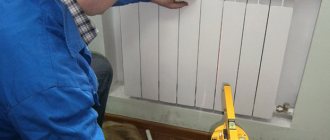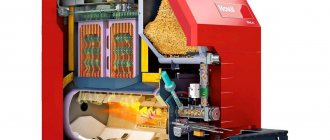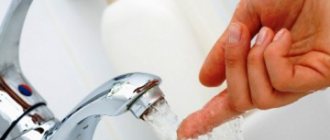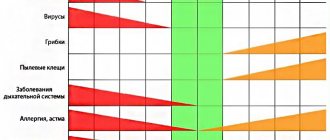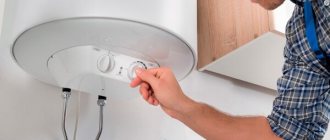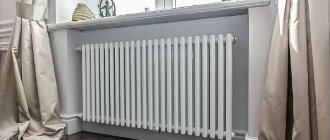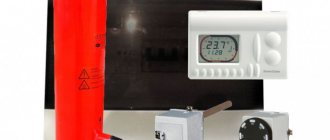When do you turn on the heating?
When it gets colder until heat is supplied, living in an apartment becomes uncomfortable and people are increasingly concerned about the timing of the heating season.
Decree of the Government of the Russian Federation dated May 6, 2011 No. 354 clearly defines the beginning and end of the season for supplying heat to residential buildings. According to the document, heating should be supplied to apartments in the fall, when the average daily outdoor temperature is below 8 °C for 5 days in a row. And turn it off in the spring at a constant temperature above 8 °C (read more - When do you turn on the heating in an apartment in Moscow and other regions?).
Thus, if the average daily temperature changes from +5°C to +10°C over several days, then it is too early to talk about turning on the heat.
Who can take measurements legally?

It is the one that is legally responsible for maintaining normal temperature.
In the application, request a check to inspect the apartment and record the fact of cold air. The commission must agree on the date and time of work with residents, and before the procedure, present a certificate of verification of measuring instruments.
Unless the applicant specifies otherwise, the verification must be carried out within two hours from the moment of the application.
If the owners do not agree with the results or consider them falsified, representatives of the state housing supervision and Rospotrebnadzor are invited to take temperature measurements (free of charge). They also have the right to contact an independent expert organization. SES provides similar services.
When choosing an organization, you need to take into account the availability of an accreditation certificate for conducting such activities, check whether thermometers or pyrometers are provided with timely verification. Otherwise, the results will be considered invalid and the money will be wasted.
The cost of services is quite high, can reach up to 10,000 rubles. The customer will have to pay, but later they can be returned if they file a claim in court, where they can apply for compensation.
We draw up an application for measurement
The paper to the management company regarding the measurement is drawn up according to the following algorithm:
- The header contains the name of the management company, full name of the manager, as well as the applicant’s data, including telephone number and other contacts.
- The main part contains a requirement to carry out a commission measurement of air temperature at a specific address, since for a long time it remains at a level that does not comply with the law (18 ° C). It is necessary to refer to the regulations that are violated, and provide examples of your own measurement results.
- Date of compilation, signature.
Enclosures will include a copy of the certificate of ownership, paid receipts for utilities, measurement reports drawn up by residents, and a contract for the provision of services.
Apply online
An application for measurements can theoretically be submitted via the Internet, if this is provided by the official portal of the management company. Sample applications are also available there.
ADVICE! You can be sure that the claim has reached the addressee only if you deliver it in person and register it in the office. The presence of a notification of receipt of a letter in the mail is also proof of sending.
Air temperature standards for the heating season in an apartment 2021
The main legislative act regulating temperature standards in premises is GOST 30494-2011. “Residential and public buildings. Indoor microclimate parameters" .
They stipulate the optimal and permissible temperature standards used for apartment buildings and various premises:
- kindergartens;
- administrative buildings.
It follows from the document that the standard temperature in the apartment should be from +18°C to +24°C .
| Period of the year | The name of a room | Air temperature, °C | |
| optimal | acceptable | ||
| Winter | Living room | 20-22 | 18-24 (20-24) |
| At the temperature of the coldest five-day period: -31 °C and below | 21-23 | 20-24 (22-24) | |
| Kitchen | 19-21 | 18-26 | |
| Toilet | 19-21 | 18-26 | |
| Bathroom, combined toilet | 24-26 | 18-26 | |
| Facilities for recreation and study sessions | 20-22 | 18-24 | |
| Inter-apartment corridor | 18-20 | 16-22 | |
| Lobby, staircase | 16-18 | 14-20 | |
| Storerooms | 16-18 | 12-22 | |
| Summer | Living room | 22-25 | 20-28 |
In brackets is the indoor temperature for nursing homes and families with disabled people.
Normal temperature in a corner apartment during the heating season
The new GOST does not say anything about houses with corner apartments; accordingly, the value is taken according to the standards of a standard living room. In the old GOST R 51617-2000 it was indicated that the value increases by 2 degrees.
Download the new GOST 30494-2011, current for 2021.
Deviations from the norm are allowed:
- for optimal - 2 °C;
- for permissible - 3 °C;
Violation by utility services that underestimate the heat supply to apartments entails both administrative and criminal liability.
How to measure the air temperature in an apartment?
It is not very easy to obtain objective figures for the measurements taken, but if you wish, you can be patient and eventually achieve a recalculation of the heat payment.
To measure the air temperature in a room correctly, you need to adhere to a number of rules:
1. Measurements are taken at an outside temperature no higher than -5°C.
2. Take measurements on a cloudy day. The rays of the sun, penetrating into the room through the window, additionally warm it up, and the readings on the device will not correspond to the actual picture.
3. Eliminate heat leakage through unsealed windows and cracks.
4. Measure temperature:
- in a private house - in two rooms of more than 5 sq.m., having 2 external walls or a large window (an area of 30% of all walls in the room);
- in an apartment building - measurements are taken on the first and last floors, in two rooms of more than 5 sq.m.
5. The measuring device should be located at a distance of at least half a meter from the outer wall and battery, at a height from the floor in rooms located mainly:
- in a sitting position - 10; 60 and 170 cm;
- standing or walking - 10; 110 and 170 cm.
If the temperature in the apartment is below normal, what should you do?
If during the measurements a deviation from the norm was found to be smaller, it is necessary to notify the utility service or management company that services the apartment building. She sends an emergency team to draw up a measurement report. This is an official document containing a number of details, on the basis of which a decision is made to recalculate utility bills for services. It is drawn up in two copies, one of which remains in the hands of the tenant.
Certificate of checking the temperature in the apartment
If there is a significant deviation from the norm, the management company is obliged to recalculate heating payments for the month in which these deviations were discovered.
The law establishes payment reduction figures - they amount to 0.15% per hour when a temperature deviation from the standard value is detected.
For example. During the heating season, the air temperature in the corner room is fixed at 16 °C (the norm is +20 °C) 14 hours from the design period (it is 720 hours). After taking readings from an individual metering device, the thermal energy consumption for the past month amounted to 0.7 Gcal at a tariff of 1,900 rubles. 32 kopecks for 1 Gcal. Since the air temperature was below normal, the amount of payment for heating is reduced by 0.15% for each hour when it is recorded in the act.
Recalculation of utility bills for heating
- The fee for 14 hours when heating was provided of inadequate quality is reduced by: 0.15% x 14 hours = 2.1%.
- Standard payment for heat in the billing period (30 days or 720 hours): 0.8 Gcal multiplied by the tariff of 1,900 rubles. 32 kopecks total 1,520 rub. 25 kopecks
- As a result, after the reduction we get: 1,520 rubles. 25 kopecks x (100% - 2.1%) = 1,488 rubles. 32 kopecks
There are cases when patient residents measure their temperature for several days and during this period it constantly falls short of the norm. Then the fee reduction becomes significant. But not every management company is ready to unquestioningly recalculate the cost of heating services. Often, dissatisfied tenants can only defend their rights in court.
Please note that heat payments can only be recalculated once a calendar year. The process of registration and collection is quite lengthy, requiring scrupulousness and a large number of documents.
Possible outcomes of the complaint
After receiving a complaint about a temperature discrepancy in the apartment, the housing and communal services company must eliminate the violations as soon as possible. If this does not happen within a week, the user has the right to contact any regulatory authority. Complaints about violations of the temperature regime in a home are considered by the State Housing Inspectorate, the Prosecutor's Office or Rospotrebnadzor. The complaint can be taken to the destination in person, or it can be sent by regular mail or email.
The period for consideration of a claim is usually a month. You can also file a claim on the website https://dom.gosuslugi.ru, the Society for the Protection of Consumer Rights or Rostekhnadzor.
Attention
In some cases, during the investigation, the reasons for violation of the temperature regime in residential premises may be identified, which arose not through the fault of the housing office employees. In such cases, recalculation is difficult or impossible to achieve.
We are talking about the following cases:
- poor quality of windows and doors, damage or absence of the insulating layer of the walls in the apartment, leading to large heat losses;
- presence of air pockets in risers;
- reduction of heat transfer in radiators.
In these cases, recalculation is a controversial issue and is not clearly resolved.
Problems with the heating system
Such problems, as they say, lie on the surface. Their consequence is not only barely warm radiators, but also increased humidity due to freezing and thawing of the walls. This inevitably leads to the formation of fungus. Of course, such conditions are far from normal for living. Typical signs of heating problems:
- small leak in the radiator,
- noise and bubbling in pipes,
- difference in radiator temperature within one apartment,
- heat distribution is uneven across the floors of the house,
- problems in the apartment building system as a whole.
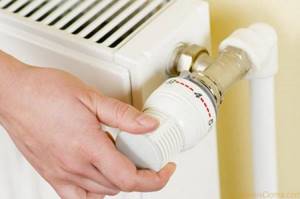
When preparing apartment buildings for the heating season, the management company is obliged to check all systems. If any of them fails, then a number of actions must be taken to eliminate it.
Who can take measurements legally?
If it’s cold at home, the first thing you need to do is contact the emergency dispatch service, where it will be recorded, the applicant will be informed of the number, date and surname of the person who accepted the application, and the management of the management company.
It is the one that is legally responsible for maintaining normal temperature.
In the application, request a check to inspect the apartment and record the fact of cold air. The commission must agree on the date and time of work with residents, and before the procedure, present a certificate of verification of measuring instruments.
Unless the applicant specifies otherwise, the verification must be carried out within two hours from the moment of the application.
If the owners do not agree with the results or consider them falsified, representatives of the state housing supervision and Rospotrebnadzor are invited to take temperature measurements (free of charge). They also have the right to contact an independent expert organization. SES provides similar services.
When choosing an organization, you need to take into account the availability of an accreditation certificate for conducting such activities, check whether thermometers or pyrometers are provided with timely verification. Otherwise, the results will be considered invalid and the money will be wasted.


